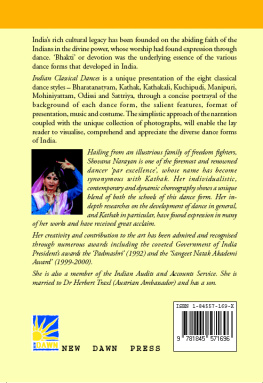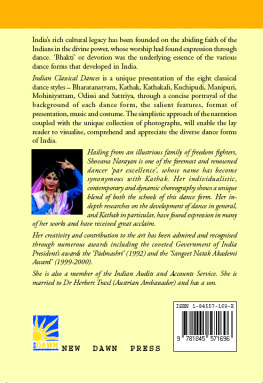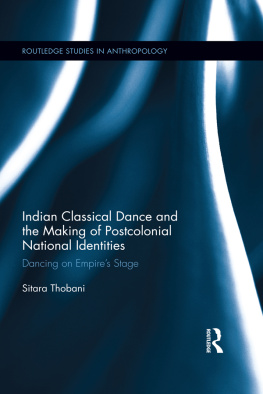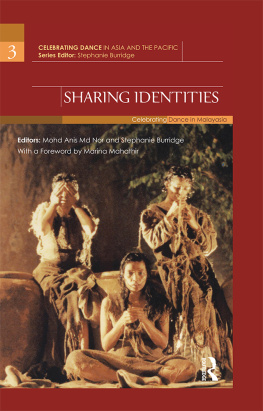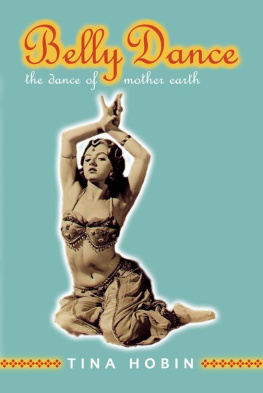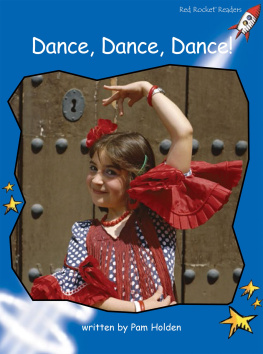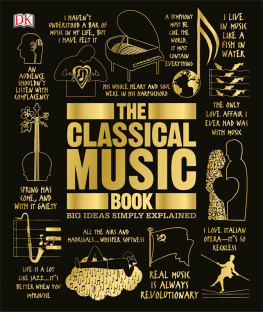Shovana Narayan - The Sterling Book of Indian Classical Dances
Here you can read online Shovana Narayan - The Sterling Book of Indian Classical Dances full text of the book (entire story) in english for free. Download pdf and epub, get meaning, cover and reviews about this ebook. year: 2004, publisher: New Dawn Press(IL), genre: Children. Description of the work, (preface) as well as reviews are available. Best literature library LitArk.com created for fans of good reading and offers a wide selection of genres:
Romance novel
Science fiction
Adventure
Detective
Science
History
Home and family
Prose
Art
Politics
Computer
Non-fiction
Religion
Business
Children
Humor
Choose a favorite category and find really read worthwhile books. Enjoy immersion in the world of imagination, feel the emotions of the characters or learn something new for yourself, make an fascinating discovery.
- Book:The Sterling Book of Indian Classical Dances
- Author:
- Publisher:New Dawn Press(IL)
- Genre:
- Year:2004
- Rating:3 / 5
- Favourites:Add to favourites
- Your mark:
- 60
- 1
- 2
- 3
- 4
- 5
The Sterling Book of Indian Classical Dances: summary, description and annotation
We offer to read an annotation, description, summary or preface (depends on what the author of the book "The Sterling Book of Indian Classical Dances" wrote himself). If you haven't found the necessary information about the book — write in the comments, we will try to find it.
The Sterling Book of Indian Classical Dances — read online for free the complete book (whole text) full work
Below is the text of the book, divided by pages. System saving the place of the last page read, allows you to conveniently read the book "The Sterling Book of Indian Classical Dances" online for free, without having to search again every time where you left off. Put a bookmark, and you can go to the page where you finished reading at any time.
Font size:
Interval:
Bookmark:

THE STERLING BOOK OF
Indian Classical Dances
Shovana Narayan
NEW DAWN PRESS, INC.
UK USA INDIA
NEW DAWN PRESS GROUP
Published by New Dawn Press Group
New Dawn Press, 2 Tintern Close, Slough, Berkshire, SL1-2TB, UK
e-mail:
New Dawn Press, Inc., 244 South Randall Rd # 90, Elgin, IL 60123, USA
e-mail:
New Dawn Press (An Imprint of Sterling Publishers (P) Ltd.)
A-59, Okhla Industrial Area, Phase-II, New Delhi-110020, INDIA
e-mail:
www.sterlingpublishers.com
The Sterling Book of: Indian Classical Dances
Copyright 2005 by Sterling Publishers Pvt. Ltd.
ISBN 1 84557 169 X
E-ISBN 978 81 207 9078 0
All rights are reserved. No part of this publication may be reproduced, stored in a retrieval system or transmitted, in any form or by any means, mechanical, photocopying, recording or otherwise, without prior written permission of the original publisher.
Photo Credit
Sangeet Natak Akademi: Photo Nos.
1, 2, 9-14, 16-19, 21-24, 26-30
CCRT: 3, 15, 20, 25
Ashwani Chopra: 4-8
PRINTED IN INDIA
Preface
India is endowed with a rich cultural heritage founded on the profound faith of the Indians on religion. Tracing down the history of Indian classical dances, one would find that the temples provided the platform for expression of many forms of art, particularly dance, which had Bhakti or devotion as its underlying essence.
This book throws light to all the eight classical dance forms of India, highlighting their individual styles and presentation. The evolution of each dance form has been a gradual process. Each form underwent a mingling of drama, music and rhythm with emphasis on stylisation, individualism, concentration and elaboration of themes relating to major deities of Hinduism, as well as a development of a vocabulary of repertoire arranged in a systematic fashion.
In this study the author has made a synopsis of the dance forms, including their background in details. The interesting element that comes to light is that those dance forms which were practised by male artistes did not require any rechristening while few of the others needed a change of name to gain respectability. The social renaissance that ensued in the twentieth century, brought about a cultural resurgence, and the former glorified status of all the dance forms has been regained, which in turn has added colour to Indias identity in the international arena.
Chapter One
Indian Classical Dances
Man had always been overwhelmed by the beauty of creation, which in turn, had inspired within him a feeling of humility before the power behind all creations. Man felt an urge to express himself before Him by using the most readily available materials in translating his beliefs and emotions in various forms of art.
India is a subcontinent known for its rich cultural legacy and its profound religious and philosophical thoughts. The enmeshing of pre-Aryan, Aryan, as well as other historical trends have contributed to the evolution of a versatile and rich cultural heritage in India which has been founded on the abiding faith of the Indians in the divine power, and its worship, that found expression through dance.
Bhakti or devotion was the underlying essence of the various dance forms that developed in India. Through this representation of devotion, it sought to uplift both the viewer and the performer and therefore, the practice of performing arts was considered to be a high form of yoga. Herein, the dancer goes through all the states of meditation or yoga. Even the audience is not left untouched by it because the emotional process that occurs during any dance performance, transports the audience too along with the dancer, into a realm of beauty binding them together in the thread of rasa (or ultimate bliss). It is this experience and realisation of spiritual ananda (sublime joy) that is emotionally satisfying and which goes beyond mere entertainment.
Hindu mythology is full of tales on gods and goddesses. In Hinduism, God manifests himself in the many, thus creating diversity out of oneness, while at the same time, paradoxically, emphasising oneness within this diversity. Folk and mythological tales did not remain untouched. Most of the gods and goddesses, more often than not, are represented as artistes. Brahma, Vishnu and Mahesh, though seen in reverence, are also viewed through various manifestations as dancers. Hence Lord Krishna, the incarnation of Vishnu, as the Natwari represented the beauty, charm and sublimity of all dancers while Lord Shiva as the Natraj, himself, symbolised the striking dancer or the king of dancers. They became the subjects for enactment through dance.
Temples provided the platform for the birth and nurture of all the classical dances. Here tales from Indian mythologies were told through dance movements. Most of the forms were largely solo in delineation. Hardly any stage props were used. Thus the onus fell on the dancer for effective communication for which they utilised mudras (hand gestures), bhavas, rasas (moods and emotions) and expressions for enabling characters and situations to be described. Hence all dance forms were similar in their origin and ultimate aim, as they all originated as the outward manifestation of expression, borne out of a deep religious sentiment. They all ended with the taste of rasa. It was only the regional development that gave each dance form its characteristic flavour.
In the creation of the rasa along with the prowess of the dancer, the personality and execution, aesthetic and spiritual involvement of the dancer cannot be set aside. Nardas, in his Sangita Makaranda, defines the attributes of a dancer as
ange na lamba yegditam haste, nartham pradarshayet.
netrabhyam bhavyedhatam padabhyam tala nirnayal
implying that by his body he (dancer) indicated the general import of a song, with his hands its meaning, with his eyes he expresses the feelings and sentiments, and with his feet he keeps the tala and time.
In an atmosphere that regarded expression through arts as an accepted way of life, since the pre-historic times in India, the first recorded codification in the field of arts was contained in the Natyashastra. According to the Natyashastra, it is believed that in the Himalayan region, at the instance of Lord Indra, Lord Brahma created the fifth veda, namely the Natyaveda that includes dance by incorporating lyrics from the Rigveda, music from the Samaveda, histrionics from the Yajurveda and rasa (emotions) from the Atharvaveda.
The Natyashastra, written approximately about two thousand years ago and which was believed to have been lost, was accidentally rediscovered by F. Hall in the latter part of the nineteenth century. Hall printed the relevant chapters of the Natyashastra as an appendix to his edition of the Dasarupa. The original Sanskrit text was subsequently brought out in 1894. Accredited to author sage Bharata, it is a treatise of the entire panorama of theatre seen in the Indian subcontinent encompassing the elements of dance, speech, music, instruments, etc. In the context of dance, this treatise on dramaturgy is a codification of all possible postures and gaits such as the mandalas (10 modes of standing), sthankas (6 modes of resting), utplavanas (5 kinds of leaps), bhramaris (7 kinds of pirouettes), caris (32 kinds of gaits that include the ground movements known as bhaumi and movements with one or both legs in the air known as akasiki), 28 single hand gestures (asamyukta hastas), 24 combined hand gestures (samyukta hastas) and 30 ornate gestures (nritta hastas). In addition there are detailed codifications on various minor limbs such as eye and neck movements along with other important fields such as speech (vacika), emotions (bhavas and rasas), types of heroes (nayaks) and heroines (nayikas) and musical instruments. Dance, music and drama were classified as margi (that for the gods) or desi (that for the people). Expressions in performing arts could be rendered through three limbsnritta (pure dance denoting movements to rhythm), nritya (movements employing histrionics) and natya (drama). These representations were further categorised as tandava (masculine) or lasya (feminine) in nature.
Font size:
Interval:
Bookmark:
Similar books «The Sterling Book of Indian Classical Dances»
Look at similar books to The Sterling Book of Indian Classical Dances. We have selected literature similar in name and meaning in the hope of providing readers with more options to find new, interesting, not yet read works.
Discussion, reviews of the book The Sterling Book of Indian Classical Dances and just readers' own opinions. Leave your comments, write what you think about the work, its meaning or the main characters. Specify what exactly you liked and what you didn't like, and why you think so.

